There’s an old internet aphorism that says anything that exists or that can be imagined, someone’s already made internet porn about it.
A similar case could probably be made for so-called sexy Halloween costumes. There’s an entire industry based on taking viral news stories, sexualizing them, and turning them into skimpy, slinky, cheaply-produced outfits that can be sold at a mark-up for Halloween.
Some of this year’s topical costumes, all courtesy of lingerie company Yandy, include the sexy sold-out chicken sandwich, sexy Mr. Rogers (is nothing sacred?), and sexy college admissions scandal. (This, of course, is in addition to the standard fare: sexy nun, sexy nurse, sexy mummy.)
“Women love dressing up in sexy Halloween costumes and showing off some skin because it’s fun,” notes the Spirit Halloween website on their Sexy Women’s Halloween Costumes of 2019 page. There is no Sexy Men’s Costumes category.
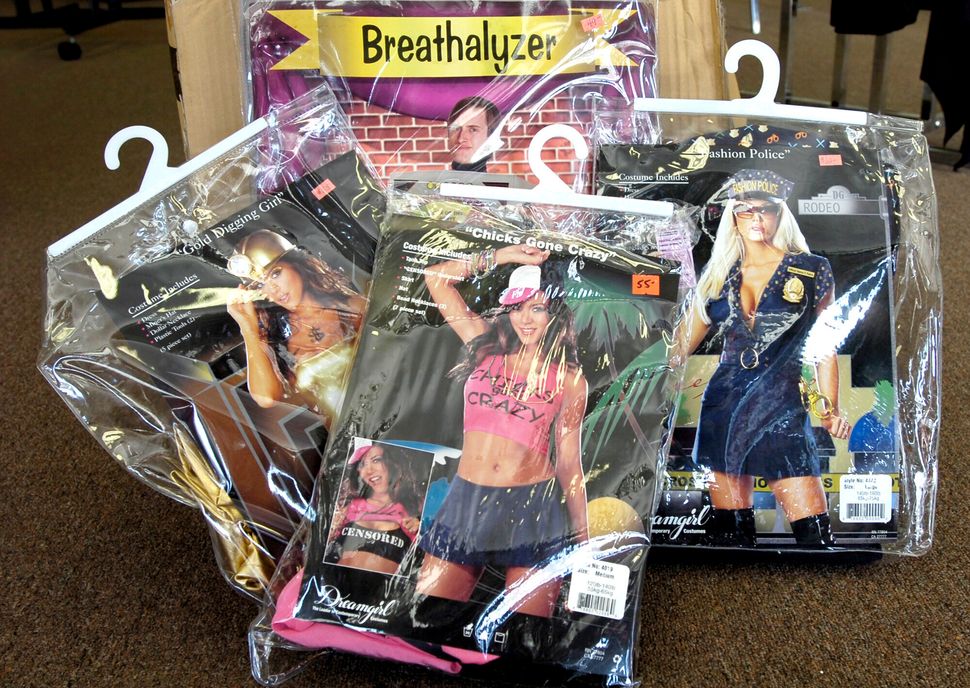
When asked if there’s any link between “sexy” Halloween and Samhain, the Celtic festival on which the modern holiday is based, author and Halloween historian Lesley Bannatyne is decisive: “No, absolutely not,” she told HuffPost Canada.
People dressed up during medieval celebrations of church holidays like All Saints’ Day, which has connections to Halloween’s historical origins, but there was nothing sexy about it — people dressed up simply to obscure their identities, because they were out causing mischief and didn’t want to be identified.
The beginning of Halloween costumes
Canada was a starting point for Halloween’s arrival in North America, when a large number of people from Ireland and Scotland immigrated in the mid-1800s. The very first recorded example of people dressing up on Halloween was in Vancouver in 1898, and the term “trick or treat” was first recorded in Lethbridge, Alberta in 1927.
In those days, people dressed up, Bannatyne said. While “sexy” costumes were not yet a thing, women often dressed in elegant, glamorous clothing that was sometimes considered slightly “exotic.”
“They wouldn’t call it a ‘sexy’ costume, but it would be called something like ’women showing themselves off in the best light,’” Bannatyne said.
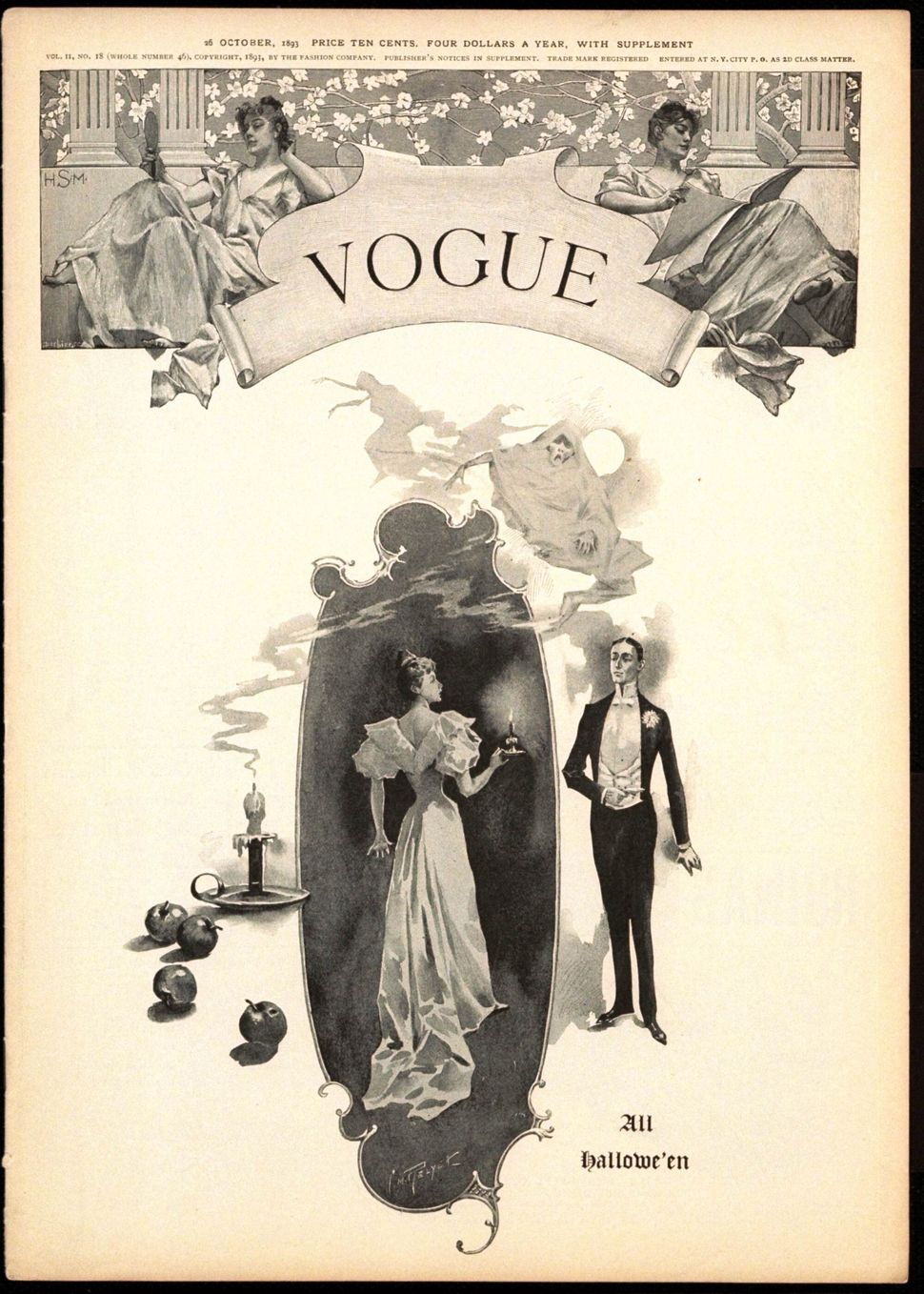
The celebrations had become “consumerist” by the 1920s, Nicholas Rogers, author of Halloween: From Pagan Ritual to Party Night and a York University history professor in Toronto, told HuffPost Canada in an email. But the sexualization of the holiday wouldn’t start for a few more decades.
Hollywood studios get involved
In the 1940s, Hollywood was ruled by a studio system that signed actors on to sometimes lucrative but often exploitative exclusive contracts. Rather than moving around to the projects of their choosing, as they do now, actors were the property of the movie studio they were signed to, and could only make movies there.
So, in the same way that actors today will go on publicity tours for their movies, actors back then would represent their studios.
One such studio publicity project came around Halloween, Bannatyne explained. Studios would get their starlets, usually gorgeous young women, to pose in “skimpy cat costumes, or skimpy witch costumes, with carved pumpkins around,” she said.
This served as a reputation builder for the actresses, and seasonal promotion for the studios.
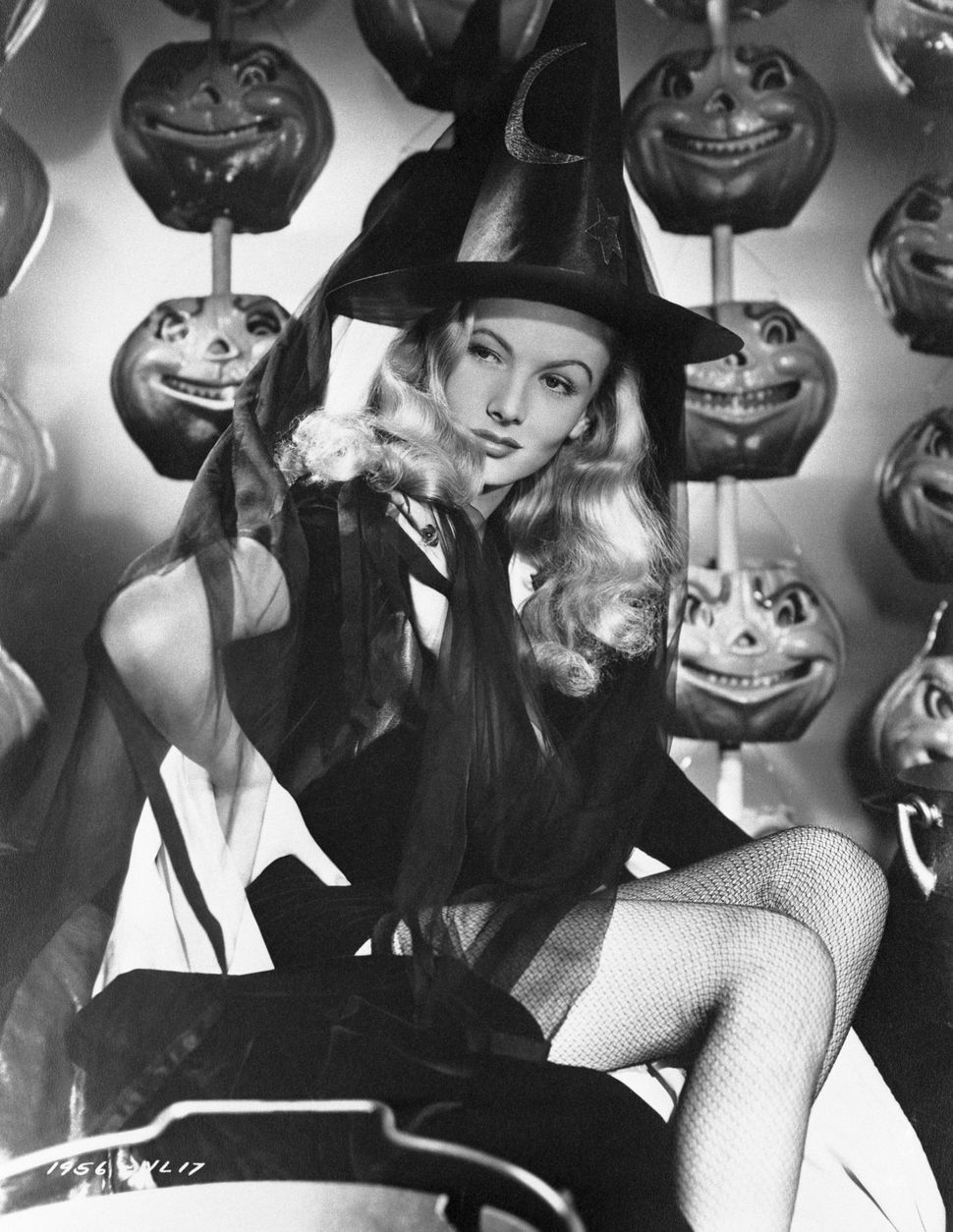
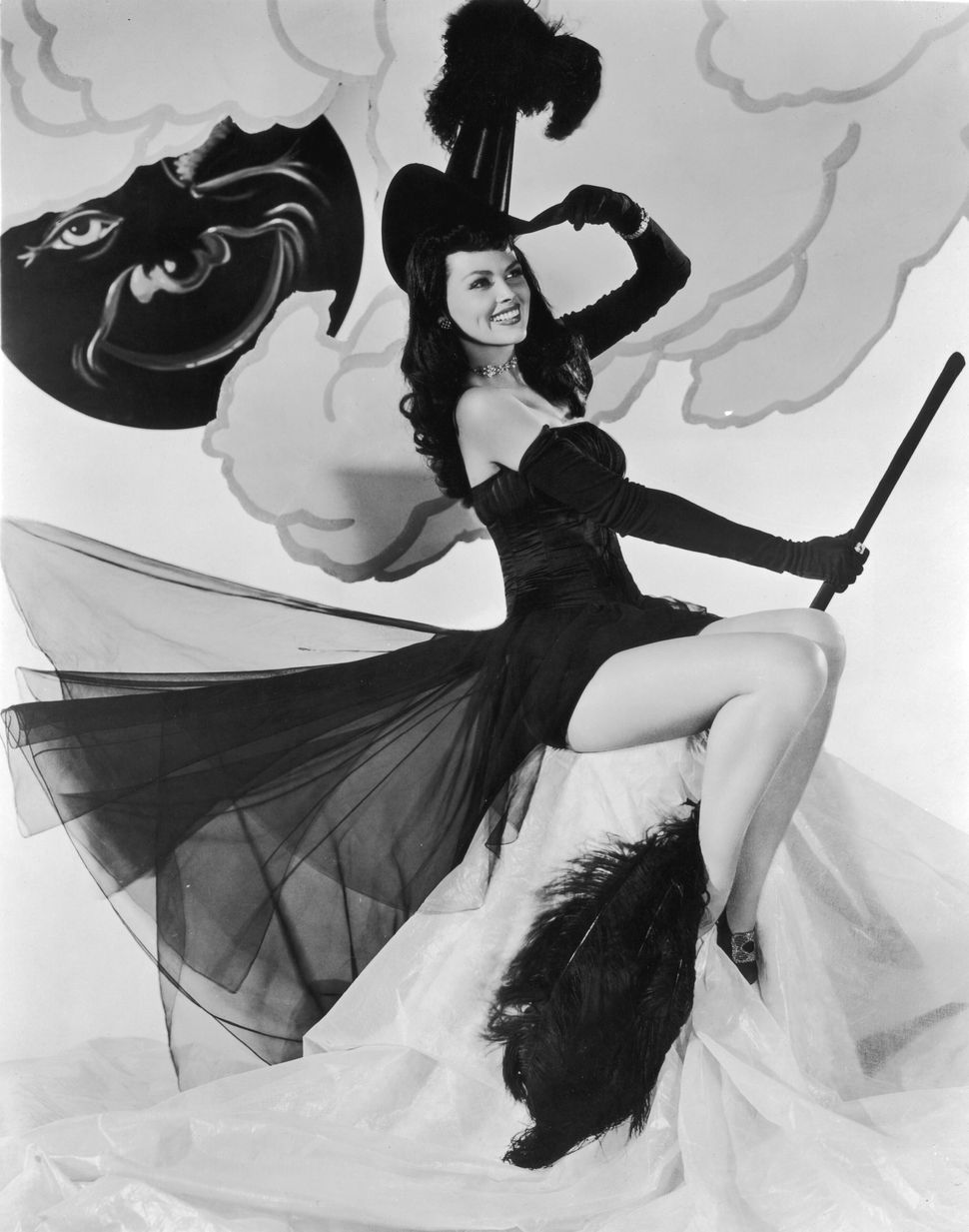
The debt to gay culture
The major force that shifted costumes from suggestively skimpy to downright sexy was Halloween’s re-emergence as an adult “holiday” in the 1970s, Rogers said. That largely started with gay Halloween parades in big cities, particularly in New York, L.A., and San Francisco.
They soon spread across the continent. Toronto’s gay village had an annual Halloween party that became so big it was subject to homophobic attacks throughout the 1970s, with angry mobs egging the party-goers.
These parades valued “outrageous” costumes, Bannatyne said. Many drag queens participated, but especially in the later years, it wasn’t just gay men who participated — it was anyone willing to go above and beyond. Costumes were often daring, ostentatious; sometimes sexual but not always. “Anything that was outrageous worked in those kinds of parades, Bannatyne said.


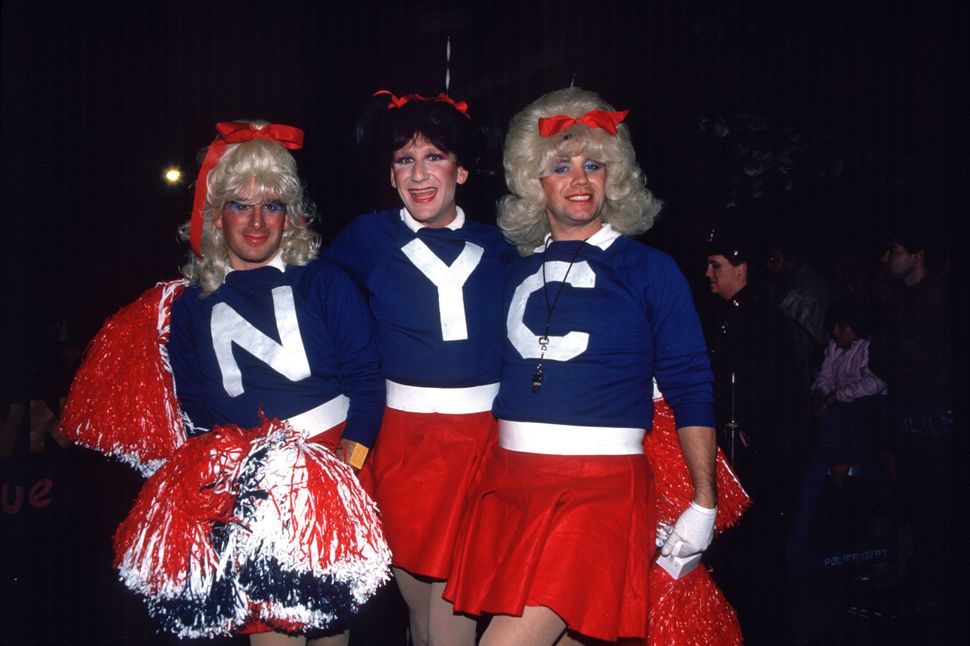
From there, according to Rogers, the celebrations “caught on as bars and restaurants decided to make Halloween a bar and club bash for heterosexuals.” In other words, Halloween was starting to become an occasion where adults would spend money on themselves, not just on children.
1980s: Slasher movies, beer, and Elvira
As these theatrical and sometimes sexy costumes were starting to become popular, a parallel movement was happening in pop culture. The late 1970s and early ’80s signalled the beginning of ultra-popular horror movie franchises like “Halloween” (1978), “Friday the 13th” (1980) and “A Nightmare on Elm Street” (1984).
The rise in popularity of the slasher flick meant Oct. 31 ceased being “eerie or spooky or creepy,” in Bannatyne’s view. “Halloween became much more visually dangerous, much more bloody,” she said. Now, she said, that kind of graphic violent imagery still exists in some horror movies, but is more commonly seen in in haunted houses than onscreen.
Another big moment that sexualized Halloween came in 1986, according to Bannatyne. The campy, glamorous goth icon Elvira appeared in an ad for Coors Light, where she’s curled up on a red plush sofa, the slit in her dress revealing her long legs.
“They had a wildly successful campaign and discovered that they could make Halloween into a beer holiday, by using a very sexy lady,” Bannatyne said.
“Around Halloween time, they would send these life-sized cutouts to liquor stores to help them distribute Coors. So many college kids stole those. Elvira was everywhere, and all of a sudden Halloween was much more of an adult holiday and a beer-drinking holiday.”
1990s - 2000s: ‘I’m a mouse, duh!’
In the 1990s, as the overt sexual artifice of the Playboy aesthetic permeated day-to-day life, “Girls Gone Wild” gained popularity, and consumerism masked as female empowerment took over the zeitgeist, Halloween costumes also became more and more sexualized.
The emphasis on blood and gore “was replaced by the sexy costume in the late ’90s and the early 2000s,” Bannatyne said. The seed that had been planted by gay parades in the 1970s was taking hold.
The concept had become ubiquitous in 2004 when “Mean Girls” was released in theatres. But the line in the movie that “Halloween is the one night a year when a girl can dress like a total slut and no other girls can say anything about it” took off as an explanation of a culture that hadn’t yet been put into words.
“I’m a mouse, duh!” has become shorthand for the humblebraggy self-deprecation of someone who knows their costume is sexy, but accepts that they didn’t put tons of energy into the concept.
That’s a more exaggerated version of something Bannatyne said holds true about Halloween: “We can tolerate anything on Halloween because it lasts one night,” she said.
“You just can’t dress up as a marshmallow peep and go out on the morning of Nov. 1,” she said. “You can’t chase your friends with a chainsaw. So there’s a certain amount of transgression that we allow, that we wouldn’t allow at any other time, because it’s finite.”
No sign of slowing down
What was subversive in the 1970s is now commonplace. In Canada, costumes are a $3.8 million industry, according to StatsCan. And slinky costumes likely represent a high percentage of that amount: “sexy costumes” are among the most commonly-searched Halloween costume terms.
According to marketing company SEMrush, searches for “sexy costume” are predicted to increase by 127 per cent from last October. “Sexy nurse” is the frontrunner, followed closely by “sexy witch,” “sexy teacher,” and “sexy cop.”
However, this can sometimes be limiting. A 2006 study by University of Waterloo sociology professor Adie Nelson found that the trend starts young: children’s costumes are gendered, with costumes for girls “clustered in a narrow range depicting beauty queens, princesses, and other exemplars of traditional femininity.”
Boys’ costumes, on the other hand, emphasized the warrior theme of masculinity and were more likely to feature villains, especially agents or symbols of death. Gender-neutral costumes, the study noted, accounted for less than 10 per cent of costumes examined.
As a result, these limited gender roles become normalized for girls (and boys), the effects of which can last a lifetime. “Once they’re older women it’s just a continuation of that same gender trend,” Nelson told The New York Times.
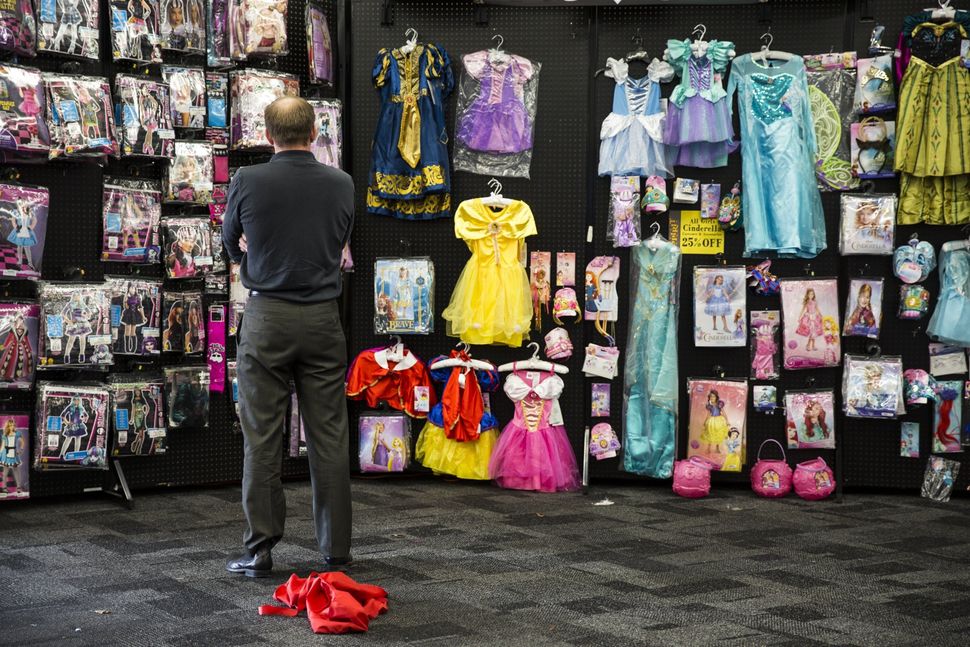
In other words, the problem isn’t the person’s decision to wear a sexy costume, the problem is that it isn’t always a free and conscious choice if the options are few and far between.
It’s impossible to predict what the future of Halloween costumes looks like, Bannatyne said, but she feels that the sexy costume — while still popular — may start to decline in the near future.
As the poised, polished, ultra-curated Instagram aesthetic is slowly starting to give way to more authentic expressions of self, Bannatyne said she’s starting to see a rise in people choosing to wear clever, satirical costumes over sexy ones. “Costumes are becoming funny, and maybe that’s what we need now,” she said.
Whatever happens, Bannatyne said some Halloween trends will never die — or at least, will never stay buried.
“There will always be witches on Halloween, and there will probably always be some sexy witches.”
Also on HuffPost: